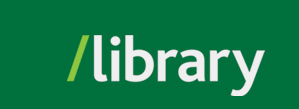This guide has been developed to introduce the primary research resources for English 105, Academic Writing taught by Dr. Ceilidh Hart. It is not a comprehensive listing of sources, but rather a starting point from which you can begin your research according to your information needs.
You are required to produce an annotated bibliography that will inform the later writing of a research essay. Assignment details are provided in your English 105 course site.
The diagram below shows you that writing a paper is not a simple linear process.
There are various aspects that will affect what you look for and what you find. Half way through doing your paper, you might find something that really changes your perspective on the topic and how you want to write about it. So make sure you give yourself enough time for this.

Big Picture
|
Situational
|
Language
|
Information Gathering
|
Adapted from: Head, A. J., & Eisenberg, M. B. (2009). Finding context: What today's college students say about conducting research in the digital age. Retrieved from http://www.projectinfolit.org/publications.html
First of all you need to think about what interests you and then brainstorm some ideas. One technique you can use is called concept mapping or mind mapping.
Here are a couple of examples:

Or:

How to Choose Keywords
Now take a look at your concept map. If you try to do a presentation about the subject in the middle you will probably be talking for a very, very, long time.
You need to look at the ideas as the side and see which one you like the most.
So I can't write about substance abuse because it is too big a topic. I noticed that I am really interested in the prevention of it, so I am going to focus on that. Prevention is a narrower topic of substance abuse.
Prevention is still quite a big topic but I am going to think about how I can prevent it in my community which makes my topic even narrower. Maybe even too narrow but you need to start somewhere!
Take a look at this video from Las Positas College Library to see how they develop their ideas.
Here's another example:

Adapted from: ENGL 1050 Thought & Writing Research Guide: Deciding on a Topic, Western Michigan University
© , University of the Fraser Valley, 33844 King Road, Abbotsford, B.C., Canada V2S 7M8

